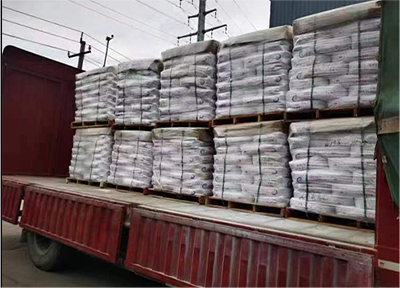
7 月 . 21, 2024 00:55 Back to list
Applications and Effects of Titanium Dioxide in Plastic Materials for Various Industries and Products
The Role of Titanium Dioxide in Plastics Enhancing Performance and Sustainability
Titanium dioxide (TiO₂) has emerged as a vital additive in the plastics industry, celebrated for its unique properties and functionalities. This compound, primarily known for its bright white color and excellent opacity, has seen a significant rise in usage across various plastic products, ranging from packaging materials to automotive components. This article explores the multifaceted roles of titanium dioxide in plastics, its benefits, applications, and the growing emphasis on sustainability.
Properties and Benefits
Titanium dioxide is esteemed for its exceptional refractive index and strong UV resistance. When incorporated into plastics, TiO₂ not only provides superior whiteness and opacity but also enhances the durability of the material. One of its primary roles is as a pigment, which helps in improving the aesthetics of plastic products, making them visually appealing to consumers. The bright white color produced by TiO₂ is particularly useful for products that require a clean and appealing look, such as containers, bottles, and household items.
In addition to aesthetic properties, TiO₂ improves the mechanical strength and toughness of plastics. It aids in the reduction of polymer degradation caused by UV radiation, thus increasing the longevity of plastic products, especially those used outdoors. This UV protection is critical in extending the lifespan of materials that are otherwise susceptible to weathering, making TiO₂ an invaluable component in markets such as construction and automotive.
Applications in Various Industries
The versatility of titanium dioxide allows its application across a wide array of industries. In packaging, TiO₂ is commonly used in films and containers to ensure the products remain visually appealing over time while protecting them from UV damage. The food and beverage industry, in particular, benefits from the opacity and barrier properties of TiO₂, safeguarding contents from light exposure that can lead to spoilage.
titanium dioxide in plastics

In the automotive sector, manufacturers utilize TiO₂ to enhance the durability and aesthetic appeal of interior components. The high resistance to UV rays helps maintain color stability and prevents materials from becoming brittle, thereby promoting safety and longevity. Furthermore, the use of TiO₂ in engineering plastics enhances their thermal stability, making them suitable for critical applications in machinery and electronics.
Sustainability Considerations
As global awareness of environmental issues continues to grow, the plastics industry faces increasing pressure to adopt more sustainable practices. The incorporation of titanium dioxide in plastics can contribute to sustainability strategies. The durability conferred by TiO₂ means that plastic products can last longer, reducing the frequency of replacement and thus minimizing waste. Furthermore, ongoing research is aimed at developing bio-based or recycled TiO₂, which can further lower the environmental impact of its use in plastics.
Moreover, manufacturers are exploring the potential of TiO₂ in photocatalytic applications, where its properties can help in degrading organic pollutants and contributing to self-cleaning surfaces. This innovative application showcases the dual benefit of performance enhancement in plastics while promoting sustainability.
Conclusion
Titanium dioxide plays a crucial role in the plastics industry, contributing to the performance, durability, and aesthetic quality of plastic products. Its widespread applications across various sectors underscore its significance, while the drive towards sustainability presents new opportunities for innovative uses. As research progresses, the integration of titanium dioxide in plastics will likely continue to evolve, making it an essential component in addressing both consumer demands and environmental challenges. The future of TiO₂ in plastics is promising, paving the way for a more sustainable and efficient utilization of materials in our daily lives.
-
Lithopone for Plastic & TiO2 R-5568/SK-6658 Masterbatch Solutions
NewsMay.30,2025
-
China Leading Rutile TiO2 Manufacturer - R5566 & R996 Grades Available
NewsMay.30,2025
-
High-Purity Anatase & Rutile TiO2 Powder Trusted Manufacturer
NewsMay.30,2025
-
High-Purity Anatase Products Trusted Supplier & Manufacturer
NewsMay.29,2025
-
Best Price Eco-Friendly Rutile TiO2 Supplier & Wholesale Factory
NewsMay.29,2025
-
Chinese Anatase Titanium Dioxide for Ceramic Glaze Reliable Supplier
NewsMay.29,2025
